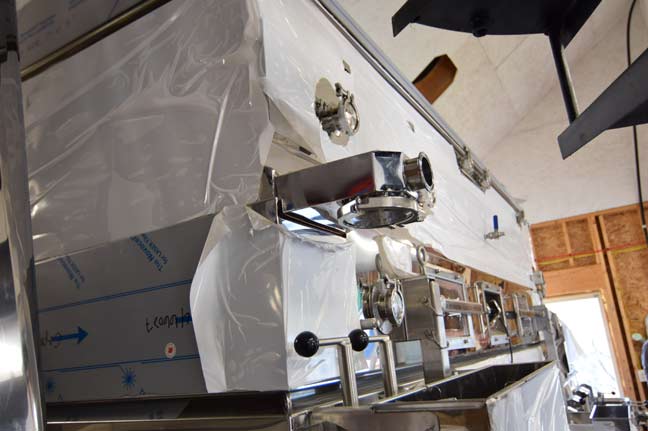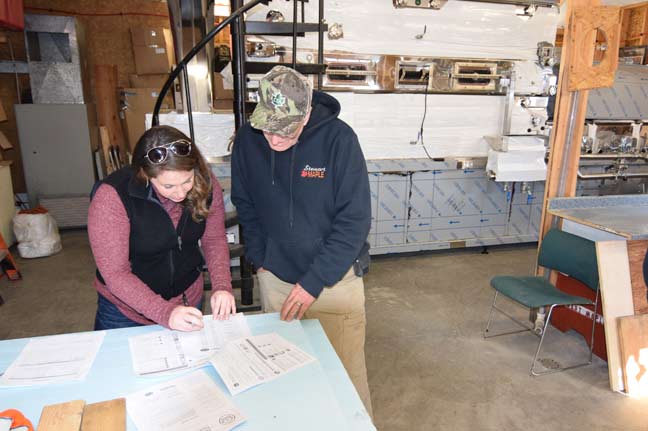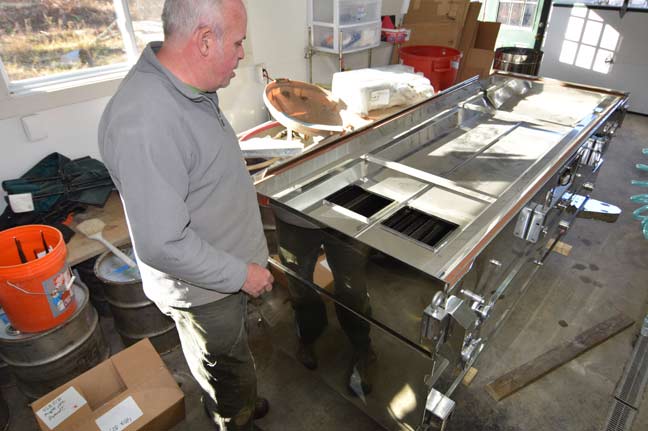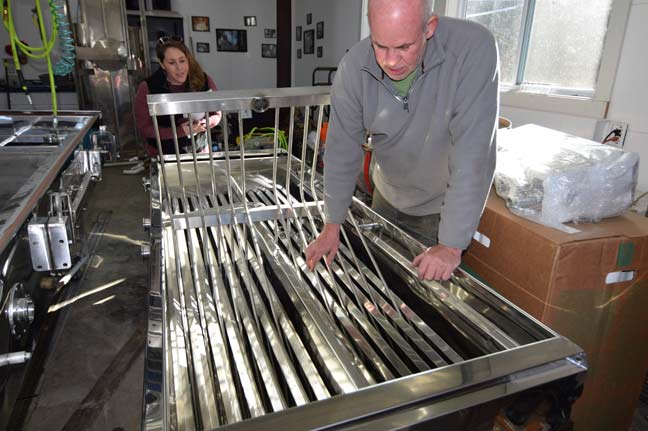Headlines
Program offers easy money to sugarmakers
New grant helps Vermont sugarmakers with preheaters, energy costs
By PETER GREGG | MAY 2017
CUTTINGSVILLE, Vt.—Nothing beats free money.
An energy savings incentive program in Vermont largely paid for new flue pan preheaters for 18 oil-burning sugarmakers last year, with even more money slated for 2017. Applications are now being accepted in Vermont for up to $7,500 in grants for preheaters.
“I’ve never done a grant program that was so easy,” said Mark Stewart, who along with sons Elliot and Tanner, taps 25,000 in the central Vermont hamlet of Cuttingsville. “It was very easy.”
Stewart received money through the program last year. The grant application was a simple two pages and took only a few minutes, Stewart said during a tour of his operation for The Maple News last November.
Stewart received $9,000 towards his new $14,000 CDL 5x10 steam pan from the so-called Vermont Enhanced Maple Sap Preheater Program.
That program is being administered by EnSave, an energy and environmental services company. Funding comes from Green Mountain Power utility and its Community Energy and Efficiency Development (CEED) fund.
Producers that were previous Central Vermont Public Service (CVPS) customers are eligible.
Up to $7,500 is available to sugarmakers with oil or propane fired evaporators. Up to $5,000 is available for wood-fired.
Sugarmakers are encouraged to call EnSave at 800-732-1399.
Gary and Brian Rapanotti, a father and son sugarmaking team in Chester, Vt. also got a new 3x8 CDL preheater from the program, which will fit over their new steam pan for this upcoming season.
They received $9,000 from the program toward the $10,500 piece of equipment.
Rapanotti said he otherwise would not have made the investment if it wasn’t for the program.
“I’ve wanted to buy one for a long time, but hadn’t gotten around to it,” he said. “This program made it really easy.”
In the 2016 season, Rapanotti used about .25 of a gallons of oil for every gallon of syrup he made on his steam boiler system. This season he was expecting to drop that down to .20 gals of oil.
Speed should also improve.
“Last year we boiled at about 52 gallons per hour,” Rapanotti said. “This year we hope to go up to 65 to 70 gallons per hour.”
Back at the Stewart farm, the Stewarts predict that they will enjoy about a 40 percent energy savings with the new preheater.
“The efficiency is definitely huge,” Elliot Stewart said.
The Stewarts hope to go from boiling sap at a 70 gallons per hour pace to 100 gallons per hour.
EnSave said the energy savings will be high across the board.
“We have calculated the average energy savings for maple producers without reverse osmosis to be 75.54 MMBtus per year, corresponding to 543.43 gallons of fuel oil per year, based on an average farm size of 992 taps,” the company said. “The calculated average energy savings for maple operations with reverse osmosis is 158.95 MMBtus per year, corresponding to 1,143.51 gallons of fuel oil per year, based on an average size of 6,114 taps.”
An enhanced sap preheater utilizes waste heat from the flue pan to preheat incoming sap to approximately 190-200 degrees.
The technology uses an auxiliary blower to force air into incoming sap in order to concentrate it before entering the flue pan. Most big equipment manufacturers make one.
The net result is an increase of 65-75 percent in evaporation and a reduction in fuel usage by approximately 40-47 percent.
The program targets medium to large sized commercial maple producers using fuel oil. The program will target maple producers regardless of whether they are using an R/O or not.
While producers using an RO consume substantially less fuel than those without RO, an estimated 39-43 percent reduction in fuel usage can still be realized by installing an enhanced preheater in addition to the RO, according to EnSave.
To maximize net societal benefits (NSB), the program will target an average of 992 taps for non-RO maple operations and an average of 6,114 taps for maple operations with RO systems, according to EnSave.
Tap numbers are based on averages from 2016 program participants, and it is likely they the actual averages will be higher based on the size of maple farms on the waiting list, the company said.
Based on discussions with Vermont-based maple equipment manufacturers, distributors, and researchers, it is estimated that between 60-80 percent of producers with 1,000 taps or more are equipped with RO systems, the company said.
In the 2016 program, 15 of the 19 approved applicants (79 percent) already had RO installed.




































